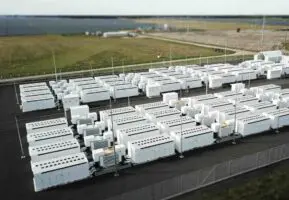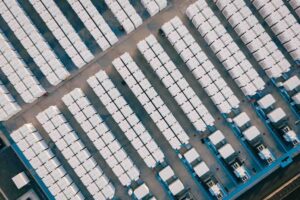The Australian solar sector is warning that the industry could be facing its toughest challenges in the coming years, as cost-competitive solar PV puts enormous strain on the business models of fossil fuel technologies.
Muriel Watt, the chair of the Australian Photovoltaic Association, said the solar industry should be prepared for a fight-back from the incumbent businesses in the form of regulatory and tariff protection, and even a campaign to demonise solar in the same way that had affected wind farm developments.
She cited the release of a report last week by the Electricity Supply Association of Australia, which represents many of the incumbents, was just a foretaste of things to come. Our report on the impact on coal-fired power stations is another example of the damage being inflicted on the industry. Tariff changes and connections issues are already becoming common.
“Things are getting serious,” Watt told the Solar 2013 conference in Melbourne. “The incumbents have found that renewables actually work. They thought that we would always be in the R&D bucket.”
More than 2.5GW of solar PV had been installed in Australia, and this could rise to at least 8GW by 2020, and to as high as 34GW by 2030 – with modules on households and businesses, as well as utility scale installations.
Watt said this will have a real impact on incumbents, which are already having network load factors reduced, retail kilowatt hour sales dropping, and fossil fuel plans closing down or operating less.
“This threatens the entire electricity structure which is based on kilowatt hours being passed through grid or sold at retailer level,” she said. Other associated technologies such as storage, solar hot water, demand management and energy efficiency would have a similar impact on demand from the grid, which would respond by putting prices up, giving further motivation for consumers to seek alternatives. This was a theme taken up by the head of the Clean Energy Finance Corporation Oliver Yates.
These are the examples cited by Watt of how the incumbent utilities would attempt to push back on solar:
Low buy back rates – low or no payments for electricity exported back to the grid from rooftop solar systems. This has already happened in most states.
Gross metering – a proposal made in Queensland which would force households to sell all the output from their rooftop systems to the grid operators, and buy it back at a higher price
Higher fixed charges – This is happening across Australia, and was the basis of the ESAA paper, but Watt and others in the industry say it ignores the benefits brought by solar PV to the network.
Restrictions on new connections – like higher fixed charges, this is happening at both household and commercial level. Some grid operators insist on having the right to curtail output when they don’t want it.
Discriminatory offerings: There was evidence that retailers were offering discounts to consumers but refusing them to solar users. Watt questioned whether discrimination between customer types on the issue of connection fees, discount and charges was legal. “They are going to be pushing really hard to get these sort of options on the table. Even if they got half of it, they would feel it was a success.
Restrictions on operation – Some grid operators insist on having the right to curtail output when they don’t want it.
Attempts to divide customers with have and have nots. – another theme from the ESAA report and other utility-sponsored studies which seeks to portray a large disadvantage to those without solar. She used this graph below (and Yates used a similar one) to highlight how the incumbent grid was responsible for most of the cost rises, but green energy got most of the blame.
Mobilizing anti renewable lobby groups – the industry is concerned that the same tactics deployed by the anti-wind lobby could be adapted for solar. As a foretaste, several landowners had opposed the siting of the proposed 20MW Royalla solar farm in the ACT – which is to be the largest in Australia to date. The landowners said they wished to sub-divide their properties and were concerned about the impact of the solar farm on visual amenity. “In a general sense people like solar … but when you start to move to large systems, putting solar in a field or next to farms next to them, that could create a different dynamic,” Watt said.
Political and regulatory support – Watt said that the current rules of the National Electricity Market favour the incumbents. The regulatory framework has to change – it has facilitated overspending and doesn’t cater for reduced demand and demand management measures. (Another point highlighted by Yates and Greens leader Christine Milne)
Watt cited the example of recent inquiries into protecting networks against natural hazards such as storms and bushfires. Proposals such as laying transmission underground had been considered, but cheaper and most efficient options such as distributed generation and min-grids had not.
But she said it was inevitable that the industry would have to move to a service and energy solutions model rather than a pure volume sales model. This would include “net zero energy buildings”, storage, and links to the electric vehicle rollout. This is something that the utilities have considered, but do not yet appear ready to embrace.











